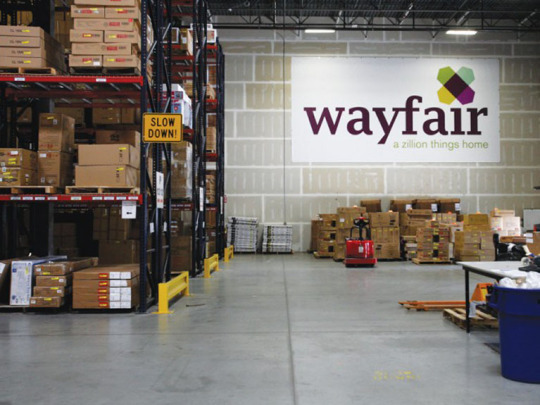
Wayfair is the latest pure play making
the move to brick-and-mortar retail, joining the long list of former
online-only brands that have opened (or will open) physical stores, including Casper, Warby Parker, UNTUCKit, Adore Me and Allbirds. The move actually appears
overdue given that Wayfair sells one category many people argue must be sold in stores to work in the
long run —
furniture.
Given Wayfair’s competition in the home furnishings market
(from specialty retailers like West Elm
as well as from big-box retailers like Target
and Walmart) and the
category’s structural issues (shipping costs, long product lifecycles,
desire to put things to the “sit” test), the RTP editors discuss Wayfair’s prospects, and whether it has waited too
long to make the jump from digital to physical.
Adam Blair, Editor: No
one would say that Wayfair has chosen an easy path. Furniture and home décor
are high consideration product categories with long lifecycles, and there’s no
shortage of competition in this vertical. Additionally, consumers increasingly
expect free or low-cost shipping, which can easily eat into profit margins when
delivering heavy, fragile products. That’s especially true if products are
returned, an unfortunate reality when items that often demand an in-person “sit
test” are purchased online. But the retailer seems to be making smart
decisions: its TV advertising has raised brand awareness, and its brick-and-mortar
stores (both permanent and pop-up) will solve some of Wayfair’s
built-in pure play problems. In fact, more stores could help in a number of
ways: by providing distribution points and return centers, and by convincing
shoppers (and investors) that the retailer is in it for the long haul. And at a
time when mall vacancies are on the rise, Wayfair should be able
to negotiate favorable lease terms.
Glenn Taylor, Senior
Editor: Amazon’s dominance has
shown that other e-Commerce players have to stand out — really stand out — if they want to gain market share in
any field. It’s not that the online model isn’t sustainable on its own from a
logistics standpoint; the competition is simply too much to handle at this
rate. In the case of Wayfair, Amazon had them beat on price by a large margin
in late 2018: 24.9% cheaper
on furniture and 39.1% cheaper on home storage, according
to Profitero. Of course, Wayfair isn’t looking to compete only on price, but
the point remains that Amazon’s continued influence in all sectors certainly
affects many decision-making processes. It was two years ago when my colleague
Adam first highlighted Amazon’s
decision to build warehouses dedicated to fulfilling furniture orders, so
Wayfair clearly saw the online competition coming. They elected to make the
move that many other pure plays have made, and decided to slowly put their foot
in the water to measure the temperature with pop-ups. I think it was always
only going to be a matter of time before Wayfair decided it made sense to find a
better arena in which to stand out on its own.
Bryan Wassel, Associate
Editor: I think the potential for
online-only furnishing is only going to grow — look at mattresses for a young
but vibrant subset of this business plan. A retailer that is confident in its
products can afford to offer trials or generous return policies, on the grounds
that 1) their offerings are high quality, and 2) it’s a huge pain on the
shoppers’ end to make a return, even if it is free. The growing ubiquity of AR also
will be a major boon here, letting shoppers use online touch points to get a
better idea than they could in a furniture showroom about whether that couch
will actually look good in their living room. That said, I think a showrooming
model may prove to be the strongest contender for Wayfair and others, letting these
online-mostly retailers pass the “sit” test while simplifying logistics by selling
solely via online channels.






